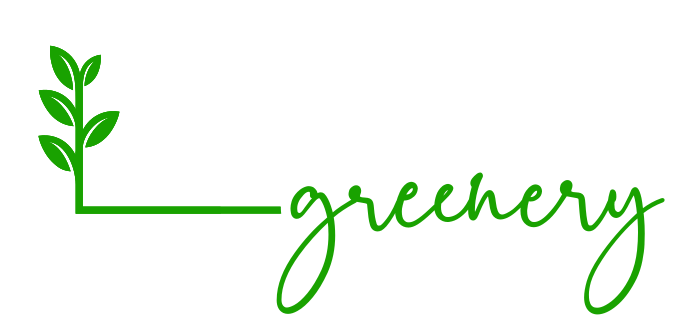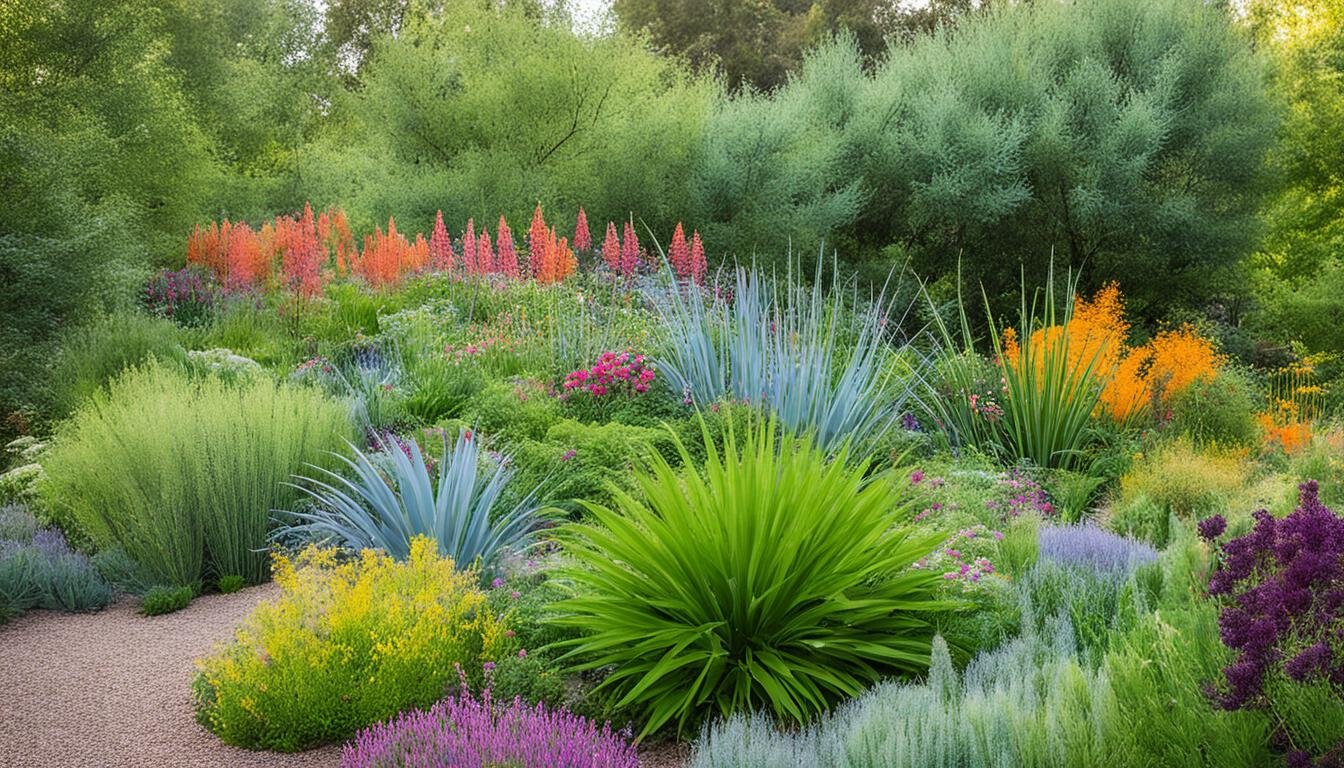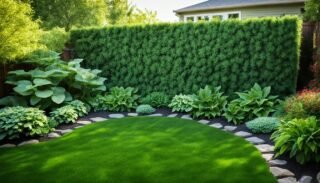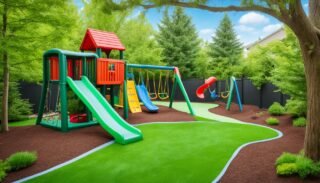Table of Contents
- Understanding the Importance of Native Plants
- Identifying Your Plant Hardiness Zone
- Native Plants for Your Region: Selecting the Right Species
- Designing a Native Plant Garden
- Soil Preparation for Native Plant Success
- Planting and Care Tips for Native Species
- Combating Invasive Species in Your Native Garden
- Native Plant Resources and Local Nurseries
- Seasonal Maintenance for Your Native Plant Garden
- FAQ
- Why should I grow native plants in my garden?
- How do I determine my plant hardiness zone?
- What types of native plants should I consider for my garden?
- How do I prepare my soil for native plant cultivation?
- Are there any special planting or care tips for native species?
- How can I combat invasive species in my native garden?
- Where can I find resources and local nurseries for native plants?
Ever wondered why some plants in your garden do well while others don’t? The answer might be in using native plants. I’ve found that native gardening changes the game for creating beautiful, easy-to-care-for landscapes. These landscapes work well with nature.
When I looked into eco-friendly landscaping, I saw how local plants are a big win. They fit our climate well, need less water, and help our local wildlife. Plus, they add a special beauty that shows off our area’s true character.
Are you ready to make your outdoor space better with native plants? Let’s see how these natural wonders can change your garden. They can also help our ecosystem.
Key Takeaways
- Native plants are adapted to local conditions, making them easier to maintain
- Indigenous flora supports local wildlife and enhances biodiversity
- Native gardening reduces water consumption and chemical use
- Local species create a unique sense of place in your landscape
- Eco-friendly landscaping with native plants helps combat invasive species
- Using native plants can lower long-term garden maintenance costs
Understanding the Importance of Native Plants
I’ve learned how crucial native plants are for our ecosystems. They do more than look good; they keep our environments healthy.
Ecological Benefits of Native Species
Native plants boost biodiversity. They’ve grown with local wildlife, forming key relationships that support ecosystems. By planting them, I help keep these connections strong and improve my area’s ecosystem services.
How Native Plants Support Local Wildlife
My native garden draws in birds, butterflies, and bees. These plants offer food and shelter, helping with habitat restoration. Seeing my small garden become a wildlife spot is incredible!
Reducing Water Consumption with Indigenous Flora
Native plants are great at saving water. They’re used to our local rainfall, needing less water than other plants. This helps me keep my garden beautiful without wasting water.
- Promote biodiversity
- Enhance ecosystem services
- Aid in habitat restoration
- Support water conservation
Choosing native plants does more than make my garden look nice. It supports my local ecosystem and helps the environment.
Identifying Your Plant Hardiness Zone
Finding out your plant hardiness zone is key for gardening success. USDA zones show which plants will do well in your area. Let’s look at how to figure out your zone and why it’s important for adapting to the climate.
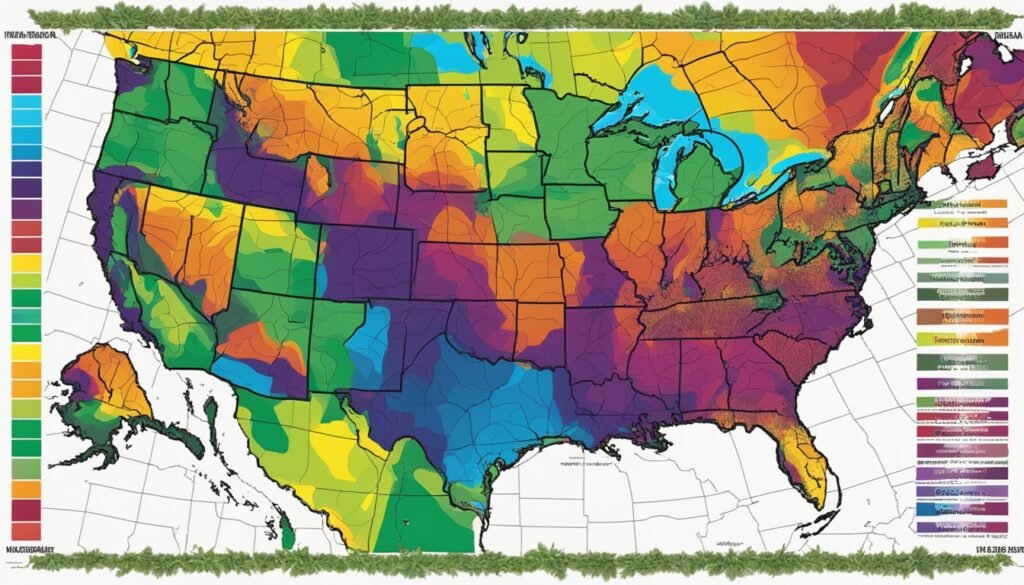
To find your USDA zone, just visit the USDA website and enter your zip code. The map splits the U.S. into 13 zones by average winter temperatures. Each zone covers a 10-degree Fahrenheit range.
Knowing your zone helps with picking the right plants and planning when to plant. For instance, Zone 5 has different frost dates than Zone 8. This info lets you choose plants that fit your local climate and plan your garden well.
- Zone 3: -40°F to -30°F
- Zone 6: -10°F to 0°F
- Zone 9: 20°F to 30°F
But remember, your yard might have its own microclimates. Things like building heat, wind, and slope can change how plants grow. By thinking about these and your USDA zone, you’ll pick plants that are just right for your area.
Native Plants for Your Region: Selecting the Right Species
Choosing the perfect native plants for your garden can be exciting. It’s important to know the different types of native plants. This helps you make better choices for your garden.
Trees and Shrubs Native to Your Area
Native tree species are key to any local landscape. Oaks, maples, and dogwoods are popular choices in many areas. Shrubs like viburnums and elderberries add structure and help wildlife.
Indigenous Perennials for Year-Round Beauty
Native perennials add color to my garden all year. Wildflowers like coneflowers, black-eyed susans, and asters are easy to grow. They attract pollinators and come back every year, making them a smart choice.
Native Grasses and Groundcovers
Ornamental grasses add texture and movement to landscapes. Switchgrass and little bluestem work well in my area. Groundcovers like wild ginger or creeping phlox fill in bare spots and prevent soil erosion.
When picking native plants, think about your climate and soil. Local nurseries and extension offices can help find the best plants for your area.
Designing a Native Plant Garden
I enjoy making gardens that look like they belong in nature. When I design a native plant garden, I mix different plant heights and textures. This makes the garden look real and interesting.
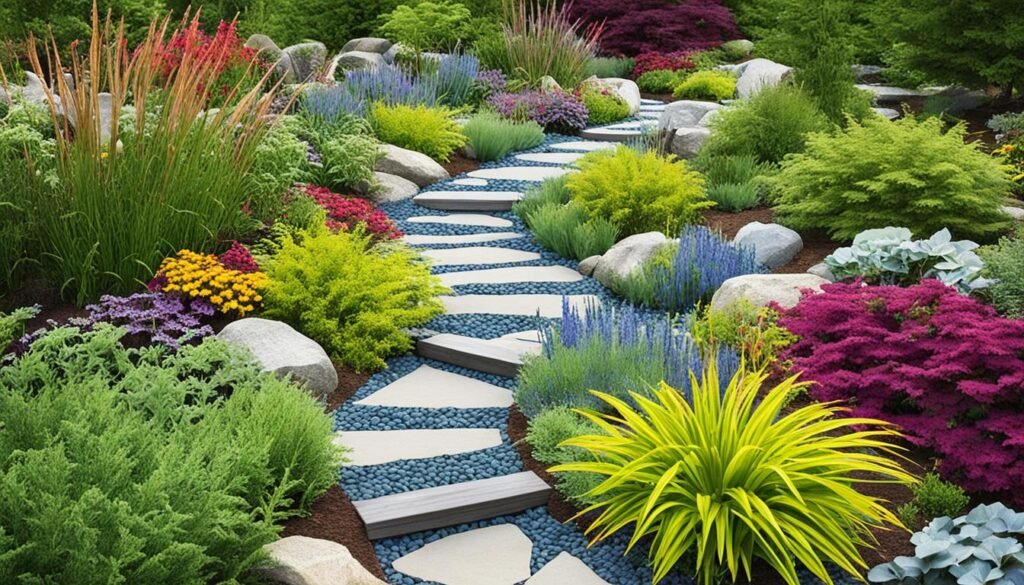
I also add natural things like rocks or logs. These help animals and make the garden look good. Plus, I plan for pollinators by putting flowers close together.
Xeriscaping is great with native plants. I put plants that need the same amount of water together. This saves water and makes different areas in the garden stand out.
To make gardens look good and help nature, I think about these things:
- Plant diversity for year-round interest
- Strategic placement of evergreens for structure
- Leaving some areas wilder for wildlife
- Using native grasses as soft borders
By using these ideas, I make gardens that are easy to care for and help local ecosystems. Native plant gardens are beautiful and good for the planet. They show that design and nature can work together.
Soil Preparation for Native Plant Success
Preparing the soil is key for native plants to do well. It’s about making a space that feels like their natural home. Let’s look at how to get your soil ready for these local gems.
Understanding Your Soil Type
First, I start with soil testing. It’s like a health check-up for your garden. You can buy a kit at a local nursery or send a sample to a lab. This test shows your soil’s pH and nutrient levels, helping you prepare better.
Improving Soil Health Naturally
After knowing my soil type, I work on making it healthier. Organic amendments are my choice. Composting is what I do most. I mix in homemade compost or well-rotted manure to help the soil and add nutrients.
If my soil is clay, I add sand to help water drain better. For sandy soils, I use more organic matter to keep moisture in.
Mulching Techniques for Native Plants
Mulching is my last step in soil prep. I use natural mulches like bark chips, leaves, or pine needles. They keep moisture in, stop weeds, and slowly add nutrients to the soil.
I spread a 2-3 inch layer around my plants, keeping it away from stems to avoid rot. This is like the natural leaf litter in their habitats.
By doing these steps, I make a great home for native plants. It takes some work at first, but it leads to plants that are healthy and need less care later.
Planting and Care Tips for Native Species
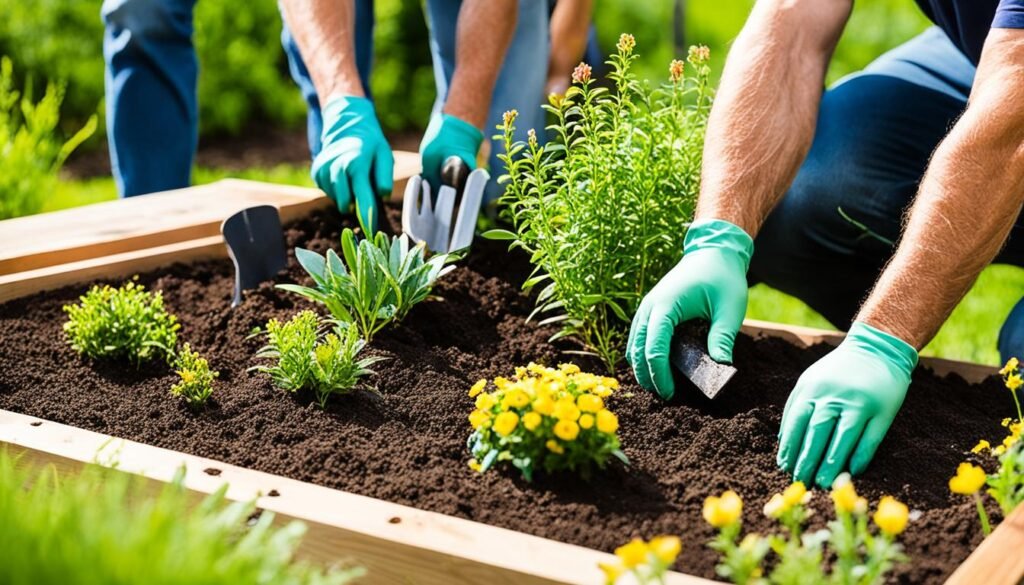
Starting a native garden is all about the right planting techniques. When I bring new plants home, I dig holes that are twice as wide as the root ball. This lets the roots spread out freely. I make sure to plant them at the same depth they were in their pots to prevent stress.
Watering needs differ among native plants. I water them deeply but not too often to help them grow deep roots. New plants need more water. I check the soil often and adjust my watering based on the weather and temperature.
Pruning native plants is easy. I cut off dead or sick branches in late winter or early spring. For plants that bloom, I prune right after they stop flowering to keep next year’s flowers coming. A little pruning keeps them looking good and healthy.
Seasonal care is crucial for native gardens. In spring, I clean up any winter debris and add a thin layer of compost. Summer means watching for pests and keeping the soil moist. Fall is the best time to plant and divide perennials. Winter is for protecting plants from frost.
- Space plants according to their mature size
- Use mulch to keep moisture in and weeds out
- Avoid fertilizers unless the soil really needs them
- Quickly remove invasive plants to protect the natives
By using these tips, I’ve made a beautiful, easy-to-care-for native garden. It supports local wildlife and does well in my area’s climate.
Combating Invasive Species in Your Native Garden
It’s vital to keep invasive plants out of your native garden. Identifying these plants is the first step to protect your garden. Let’s learn how to spot them and control them naturally.
Identifying Common Invasive Plants
Invasive plants spread fast and crowd out other plants. Look for plants that grow in thick clusters or vines. Some common invaders are:
- Kudzu
- Japanese Knotweed
- Purple Loosestrife
- English Ivy

Eco-Friendly Removal Methods
Using natural ways to control weeds is best. For small areas, pulling them by hand works well. For bigger areas, mulch or tarps can smother them. Adding native plants helps balance the ecosystem over time.
Preventing Future Invasions
Stopping invaders before they start is crucial. Check your garden often for new invaders and deal with them fast. Planting many native species makes your garden strong against invaders. By being careful and using these methods, your garden will stay healthy and safe.
Native Plant Resources and Local Nurseries
I love exploring native plants and have found some great resources. Native plant societies are full of information. They offer workshops, field trips, and plant sales. These are great for meeting other gardeners and learning from experts.
Seed exchanges are my go-to for getting new native plants. Many societies host these events. Members swap seeds, making it easy to try new plants and share your favorites.
Botanical gardens are like living libraries of native plants. I visit them for inspiration and to see plants up close. They often have guided tours and classes on native plants. Plus, they keep databases of plants that do well locally.
- Check local native plant societies for events and resources
- Participate in seed exchanges to diversify your garden
- Visit botanical gardens for inspiration and education
When buying plants, I go to local nurseries that specialize in natives. These places offer plants that fit our region and give great advice on how to care for them. Supporting them helps my community and the local ecosystem. Always ask where their plants come from to make sure they’re truly native.
Seasonal Maintenance for Your Native Plant Garden
I enjoy taking care of my native plant garden all year. In spring, I start by cleaning up. This means removing dead leaves, cutting back old growth, and adding fresh mulch. It’s also a good time to split big perennials.
Summer is when I watch over the watering needs of my plants, especially the new ones. I follow a regular pruning schedule. This helps remove dead flowers and makes more blooms grow. As fall comes, I get my garden ready for winter. This includes collecting seeds, cutting back some plants, and leaving others for winter interest and wildlife.
Winter protection is key for delicate plants. I use mulch or leaves to keep roots warm and safe from frost heave. Some plants need burlap wraps or windbreaks. All year, I look out for invasive plants and remove them quickly to keep my garden healthy.
By taking care of my garden season by season, my native plants stay healthy and flourish. It’s a fulfilling way to stay connected to nature’s cycles.
